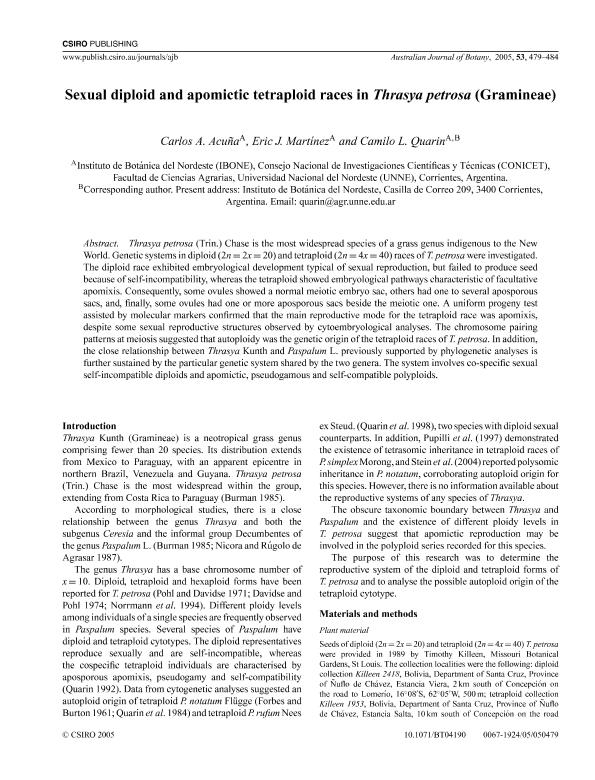Artículo
Sexual diploid and apomictic tetraploid races in Thrasya petrosa (Gramineae)
Fecha de publicación:
12/2005
Editorial:
Csiro Publishing
Revista:
Australian Journal of Botany
ISSN:
0067-1924
e-ISSN:
1444-9862
Idioma:
Inglés
Tipo de recurso:
Artículo publicado
Clasificación temática:
Resumen
Thrasya petrosa (Trin.) Chase is the most widespread species of a grass genus indigenous to the New World. Genetic systems in diploid (2n = 2x = 20) and tetraploid (2n = 4x = 40) races of T. petrosa were investigated. The diploid race exhibited embryological development typical of sexual reproduction, but failed to produce seed because of self-incompatibility, whereas the tetraploid showed embryological pathways characteristic of facultative apomixis. Consequently, some ovules showed a normal meiotic embryo sac, others had one to several aposporous sacs, and, finally, some ovules had one or more aposporous sacs beside the meiotic one. A uniform progeny test assisted by molecular markers confirmed that the main reproductive mode for the tetraploid race was apomixis, despite some sexual reproductive structures observed by cytoembryological analyses. The chromosome pairing patterns at meiosis suggested that autoploidy was the genetic origin of the tetraploid races of T. petrosa. In addition, the close relationship between Thrasya Kunth and Paspalum L. previously supported by phylogenetic analyses is further sustained by the particular genetic system shared by the two genera. The system involves co-specific sexual self-incompatible diploids and apomictic, pseudogamous and self-compatible polyploids.
Archivos asociados
Licencia
Identificadores
Colecciones
Articulos(IBONE)
Articulos de INST.DE BOTANICA DEL NORDESTE (I)
Articulos de INST.DE BOTANICA DEL NORDESTE (I)
Citación
Acuña, Carlos Alberto; Martínez, Eric Javier; Quarin, Camilo Luis; Sexual diploid and apomictic tetraploid races in Thrasya petrosa (Gramineae); Csiro Publishing; Australian Journal of Botany; 53; 5; 12-2005; 479-484
Compartir
Altmétricas




